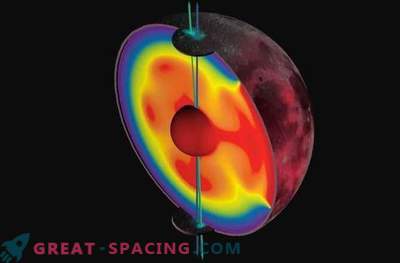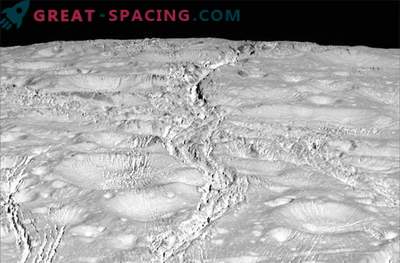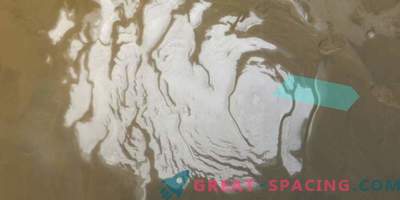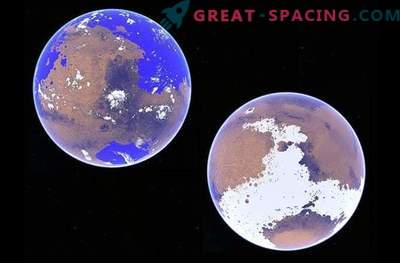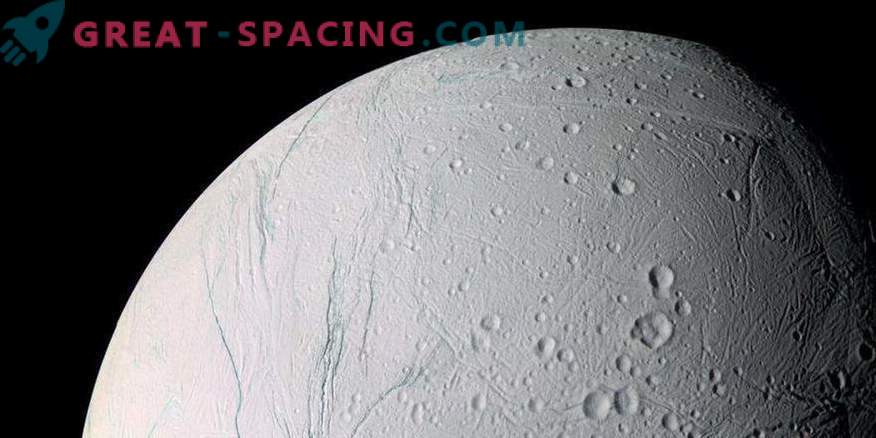
Researchers at the Cassini mission noticed that Enceladus’s active southern polar region could initially have been closer to the equator.
Recent studies by Cassini show that the ice moon of Saturn Enceladus, in the distant past, could reorient its axis of rotation (the north and south poles) due to a strike with an asteroid.
Features of the satellite show that he moved 55 degrees away from the original axis. A chain of pools was discovered covering the surface belt. These are believed to be ancient remnants of the previous equator and poles.
The area around the south pole is a geologically active area where long linear cracks are observed. Most likely, in the distant past, the asteroid crashed into the region when it was closer to the equatorial line. The probability that the geological activity is caused by internal processes is very low. In 2005, the device noticed jets of water vapor, hinting that the underground ocean breaks into space.

Looking through the information received by Cassini, scientists found evidence that Enceladus could roll over, and the area near the equator went to the poles.
Regardless of the true cause of the incident, the team believes that the destruction and the appearance of the “tiger stripes” redistributed the mass of the moon, which made the turn unstable. As a result, it took about a million years to stabilize the rotation. By that time, north and south had changed their places. This mechanism is called “true polar walk”.
This event explains why modern poles differ. The south looks younger and more active, and the north is covered with craters and more ancient. Before the “coup” they were similar.




